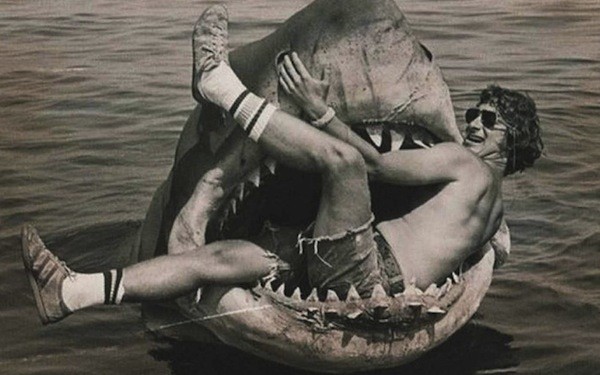The dog days of August are upon us, so at some point, you’re going to need to sit inside with your AC blasting and recover from the heat. To help supplement your binge watching, the Memphis Flyer Film/TV/Etc. Blog presents Throwback August. Each week, myself, Addison Engelking, and Eileen Townsend will each examine a film from 40, 30, 20, and 10 years ago. This week, we’ll be talking about films from 1975.
The biggest film of 1975 was also one of the most important films of all times, both from an artistic and historic point of view. When Steven Spielberg signed on to direct an adaptation of the Peter Benchley thriller about a small coastal town that lived in fear of a giant shark, he was a 26-year-old with only one feature film to his name, The Sugarland Express, starring Goldie Hawn, and scored by a little-known composer named John Williams. Once Spielberg fully analyzed the problems involved in filming the novel, he tried to back out of the deal. But producer Richard Zanuck stood firm, and the rest is history.

Director Steven Spielberg with Bruce, the mechanical shark star of Jaws.
Jaws is widely credited with being the beginning of the summer blockbuster, and there’s some truth to that, but elements of its successful formula were already in the air by the time it hit theaters. The Godfather, for example, had also been an adaptation of a potboiler novel that opened on an unusually large amount of screens in an age where the conventional film business wisdom was to strike as few prints as possible and then tour them relentlessly.

Richard Dreyfuss, Roy Scheider, and Robert Shaw
But Jaws is not a multi-generational family saga about America. It’s a tribute to Hitchcock’s dictum that mediocre books make the best movies. Since I was all of 4 years old when Jaws came out, I had never seen it on a big screen before a recent sold-out anniversary screening at Malco Paradiso mounted by Turner Classic Movies. The unpredictability of the sea caused major problems during the filming, but the one that struck me the most was the lighting. Blown up huge, you can tell how much Spielberg used reflectors to illuminate the actor’s faces during the bright, sunlit outdoor sequences. But the occasional clunky elements exposed by the HD projection only served to underline its general awesomeness. Spielberg’s uncanny talent for framing and deep staging are already there, fully blown, such as in the scene where a drunk Chief Brody (Roy Scheider) and Matt Hooper (Richard Dreyfuss) dissect a shark looking for the body parts of a child victim. Scheider and Dreyfuss are both great as the movie’s co-leads, but it’s Robert Shaw as the fisherman Quint who steals the show with the legendary monolog about the doomed crew of the Indianapolis. The delivery of his final words, “Anyway, we delivered The Bomb,” tell all you need to know about the character so haunted by the deaths he has seen and helped cause, so when he is finally swallowed by the shark, it’s the end he knew was inevitable. And that gets to the heart of all horror films. Like all great movie monsters, the shark is just justice delayed for the secret crimes we all commit.
Throwback August: Jaws